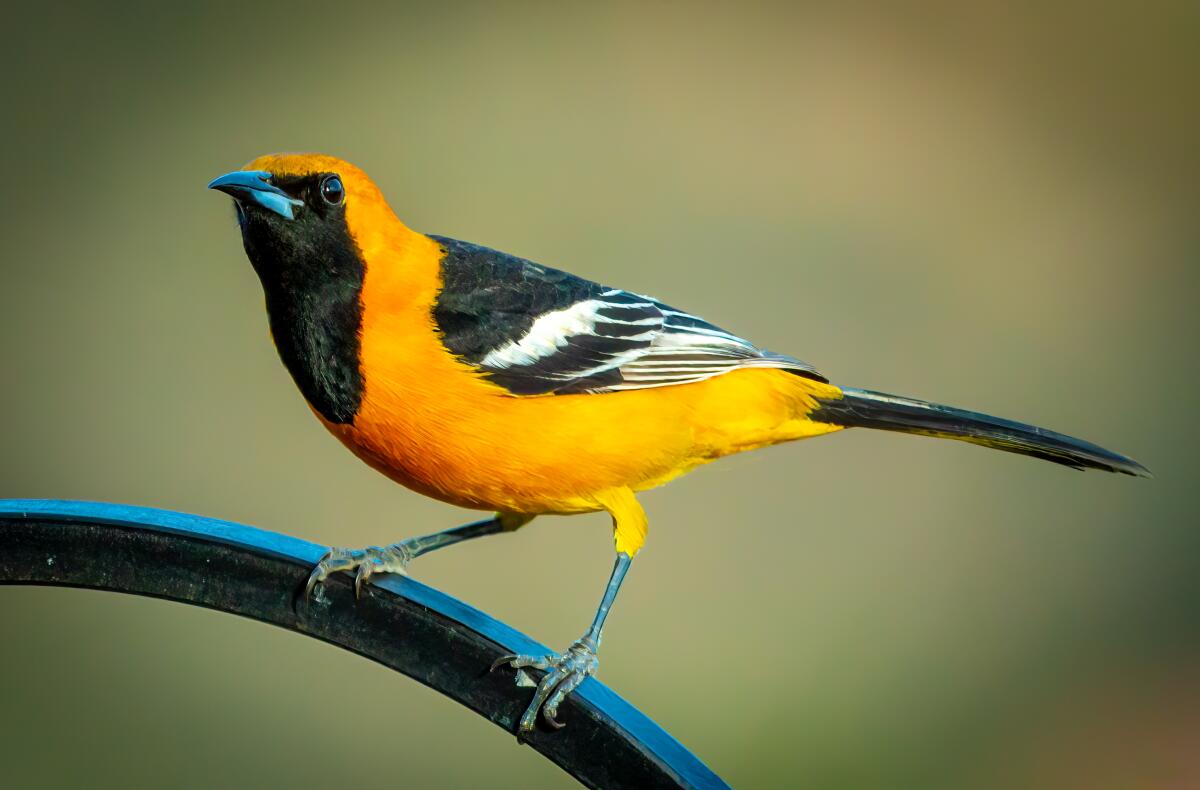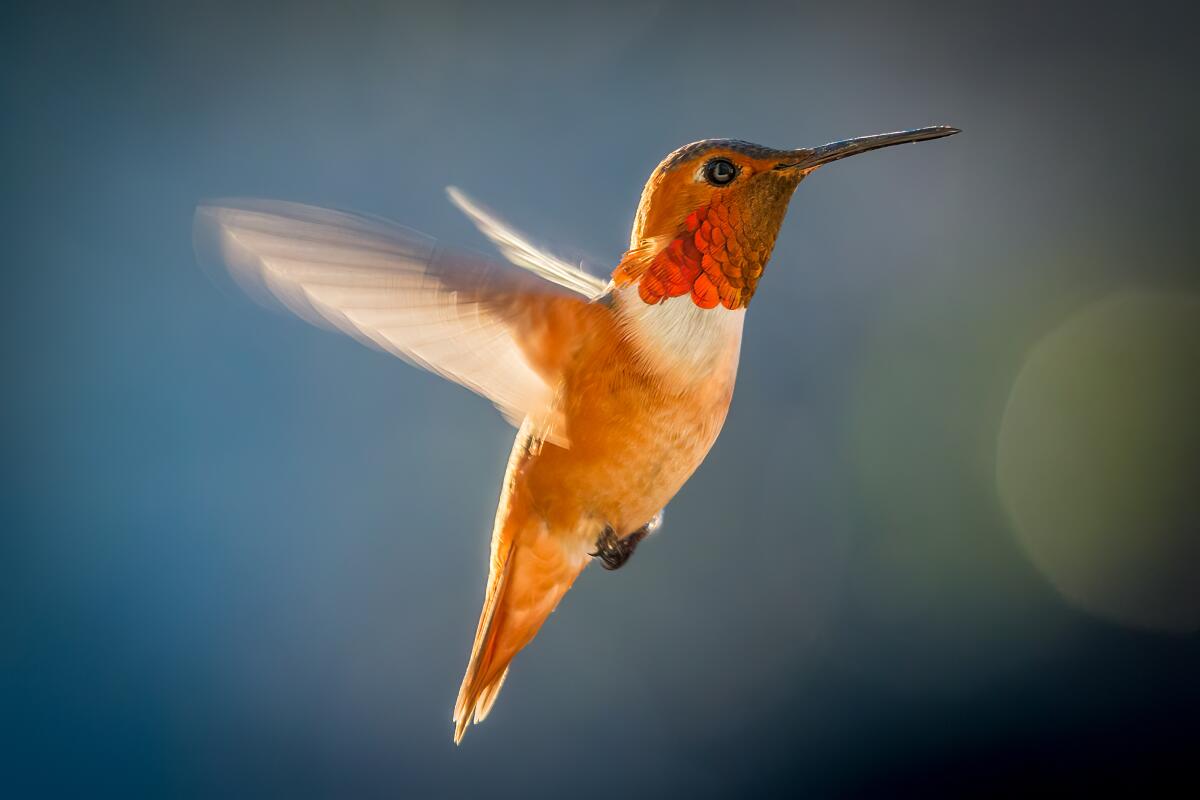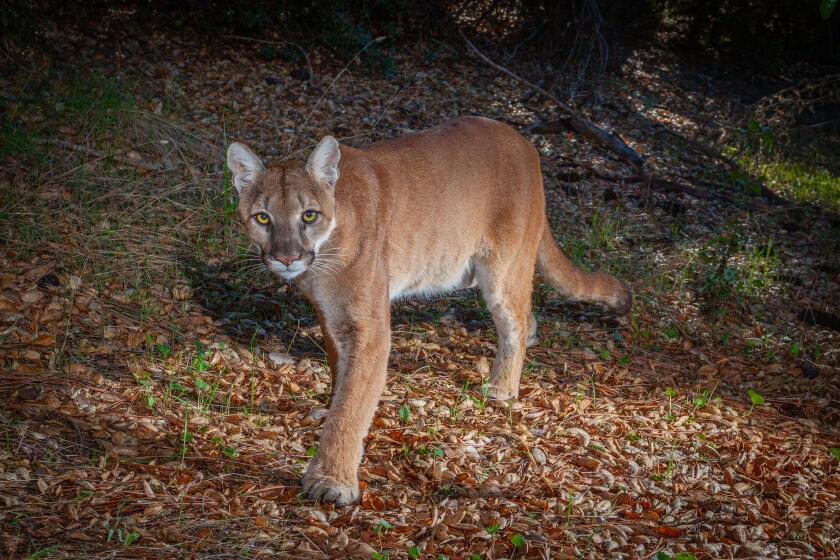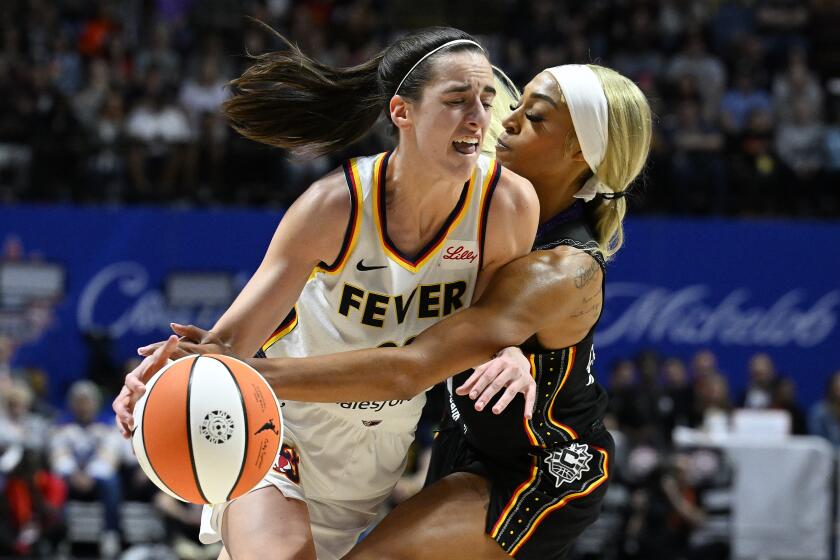Column: Many asking: Where have all the orioles and hummingbirds gone?

Ernie Cowan’s Outdoors column
The arrival each spring of migrating hooded orioles is an event that should be celebrated with some kind of festival.
Just imagine how colorful it could be.
Their bright yellow and jet-black colors are stunning, making them one of the most striking birds to visit our region.
Even casual backyard bird-watchers eagerly anticipate their appearance each March.
Huge sums are spent on new nectar feeders for both orioles and hummingbirds. Gallons of grape jelly are stockpiled to satisfy the seemingly endless appetite of ravenous orioles.
It’s a big deal around here.
And then there are the hummingbirds. Spring brings some colorful visitors to join the orioles and feast at our nectar feeders.
For the next six months these gloriously beautiful birds will typically brighten our gardens and bring comic relief as we enjoy them at feeders.
But something seems to have gone wrong.
Emails are arriving from worried readers asking why orioles and hummingbirds have seemingly vanished. Suddenly they have stopped coming to our feeders.
From the volume of emails, it’s not a casual concern.
Brett Will from Fletcher Hills was one of the first to write.
“This year the Hoodies arrived right on time with the females about three weeks later. Recently, after having males and females for three weeks together, they have vanished along with many of our hummers,” wrote Will. “To our extreme disappointment we can’t figure out why.”
Dayna Schramm from Oceanside had similar concerns.
Birds arrived on schedule and were happily feeding on her offering of grape jelly.
“They chattered away and brought pure joy to my world, and then they all disappeared,” she said.
The local pet shop could not offer any insight.
“I am baffled. I have been feeding these beauties for years and years and this just breaks my heart,” Schramm said.
Even here on Mt. Hoo there has been a noticeable reduction in bird numbers. I was going through 1 gallon of nectar a day, and it suddenly dropped to 1 gallon every four or five days.
Well, never fear, bird lovers, there is no cause for concern.
Bird scientists tell us the absence of orioles and hummingbirds, or at least the reduced numbers, are the result of our wetter than normal winter.

The birds are not gone. They are simply busy nesting and taking advantage of all the good things that came with a wet winter. They don’t need our food offerings.
Soon, they will return to backyard feeders as the young orioles emerge from the nest, summer heat wilts the wildflowers and insect hatches decline.
Andrew Farnsworth at New York’s Cornell Lab of Ornithology offered some insight. “Significant winter precipitation across the region spawned super blooms, abundant vegetation and the resultant surge of insect populations, drawing birds away from feeder resources into more naturally occurring abundances,” Farnsworth told me.
He called this a typical pattern when natural food sources are abundant.
“This is certainly true for hummingbirds in the region as well, without question, maybe to an even greater extent,” he said.
He added an important point.
“This does not highlight that bird populations are safe and increasing, nor that we should be resting on our laurels and saying we have done enough to protect birds and their habitats. Rather, it highlights the need to continue efforts and promote conservation of green spaces that birds can visit and use to maintain healthy populations in an increasingly wild, dynamic landscape in Southern California.”
I am still seeing the occasional male and female oriole pop in for a quick drink of nectar at my office window feeder, but those numbers will begin to grow in a few weeks once nest building, egg laying, hatching and fledging is complete.
That’s when the comical show reaches its peak.
Chattering and posturing males, females and fledglings will flock to feeders, hang upside down, bicker with one another and after all those dramatics, maybe get a moment to drink before flying off.
It’s a wonderful show that will continue until the orioles depart in late August or early September for their winter homes in Mexico.
I am also getting a lot of mail asking about nectar feeders.
There are concerns about hummingbirds and orioles having different sized beaks, and asking if they will share feeders.
Like many bird lovers, I started with hummingbird feeders and even drilled larger holes so the orioles could also use them.
I tried several kinds of feeders, including fancy, stained glass, or brightly colored ornamental feeders.
Besides the added expense, most turned out to be less than satisfactory because of several issues, including capacity and difficulty to clean.
What I settled on is the First Nature, 32-ounce oriole feeder. The large capacity and wide mouth make it easy to clean, which is important.
The orioles and hummingbirds both use them eagerly and their schedules don’t seem to create many conflicts. Hummers tend to be out feeding early and late, while the orioles are more active midday.
One last tip. Don’t add red dye to the nectar. A simple mixture of one part sugar dissolved in four parts boiling water is ideal for both orioles and hummingbirds. Allow the water to cool before putting feeders out.
OK, who wants to plan a spring Oriole Festival?
Cowan is a freelance columnist. Email ernie@packtrain.com or visit erniesoutdoors.blogspot.com.
Get Essential San Diego, weekday mornings
Get top headlines from the Union-Tribune in your inbox weekday mornings, including top news, local, sports, business, entertainment and opinion.
You may occasionally receive promotional content from the San Diego Union-Tribune.









